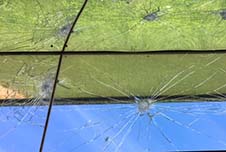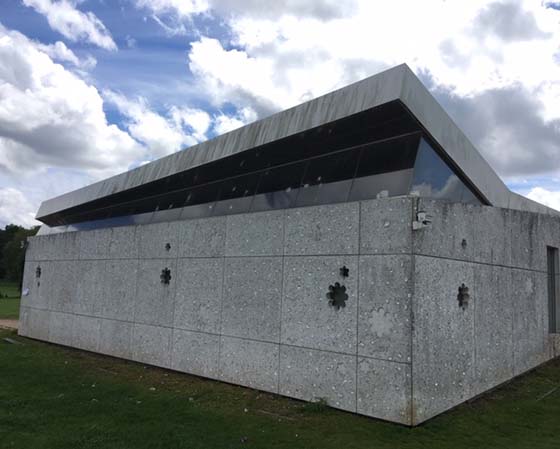
Roman hypocaust vandalised
Vandals have targeted an historic Roman hypocaust in St Albans that dates back 1,800 years.
Flint rocks were prised out of decorative metal cages surrounding a building that houses the hypocaust in Verulamium Park.
The stones were repeatedly hurled at the high-level windows, smashing holes into several of them.
This resulted in glass fragments and other debris landing on the mosaic and exposed parts of the ancient underfloor heating system.
St Albans Museums staff discovered the criminal damage on Sunday 16 June and reported the incident to Hertfordshire Constabulary.
An investigation to trace the culprits is now underway with anyone who has information about who is responsible being asked to contact the police.
It is thought the vandals struck between 5.30pm on Saturday 15 June when the building was closed and 2.30pm the following day when it was due to be re-opened.
No major damage appears to have been caused to the mosaic or hypocaust, and the building has now been re-opened to the public.
Councillor Anthony Rowlands, Portfolio Holder for Community, Leisure and Sport for St Albans City and District Council, said:
This is an appalling crime.
It is very sad that someone or some people have targeted one of the District’s most important museum and heritage sites in this way.
This is an act of mindless vandalism and I would ask anyone who can help the police with their inquiries to do just that.
St Albans Chief Inspector Lynda Coates said:
The hypocaust is a really important part of St Albans’ history and we have a duty to protect it from mindless vandalism so future generations can enjoy it.
It’s very sad that a person or people have tried to damage it. We will do everything in our power to trace those responsible. If you saw people acting suspiciously by the hypocaust at the weekend or know who may be responsible, please call us on 101.
The hypocaust has been described as “a marvel of Roman engineering” and “an excellent example of the first indoor heating systems installed in Britain”.
It allowed hot air to circulate beneath the floor and through the walls of buildings.
The intricate mosaic floor is thought to have been part of the reception rooms of a large town house, built around 200 AD near Watling Street, the major Roman road that ran past the city of Verulamium.
Both the mosaic and hypocaust were uncovered during excavations in the 1930s by archaeologists Sir Mortimer and Tessa Wheeler.
They were left preserved underground until 2004 when they were uncovered again, protected by a new building and put on show for free.

Councillor Contact:
Councillor Anthony Rowlands,
Portfolio Holder for Community,
Leisure and Sport,
St Albans City and District Council.
Email: cllr.a.rowlands@stalbans.gov.uk
Tel: 07761 232064.
Media contact:
Farhana Begum,
Marketing Manager,
St Albans Museums.
Email: Farhana.begum@stalbans.gov.uk
Tel: 01727 814638.
